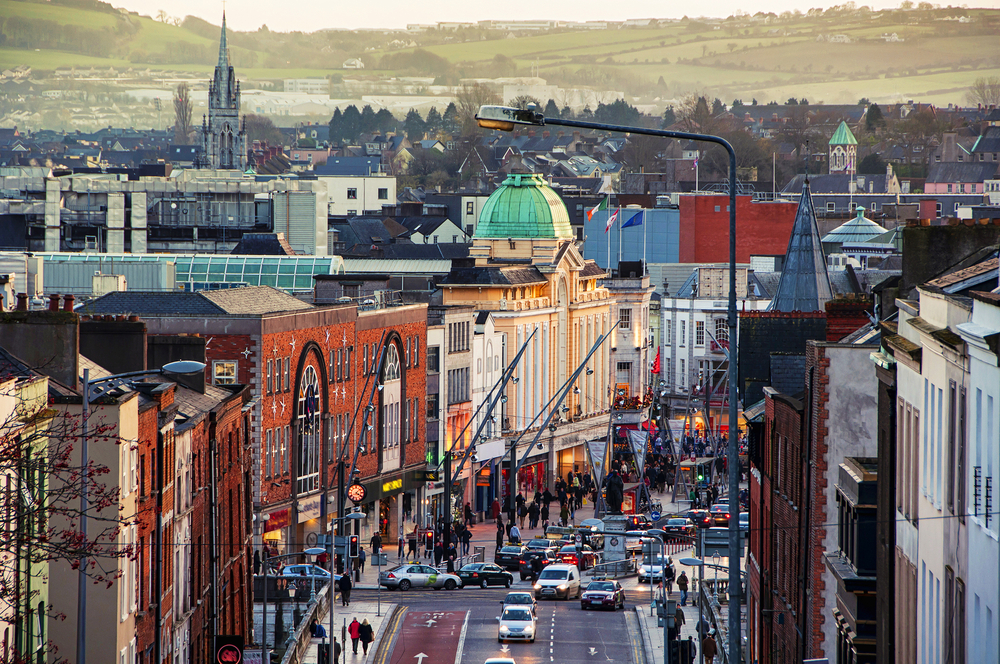 Many brands are obsessed with targeting urban audiences, particularly those who live in Dublin. But beyond the capital, there’s a marketplace of 3.6m consumers that is often ignored by marketers, writes Fional Field.
Many brands are obsessed with targeting urban audiences, particularly those who live in Dublin. But beyond the capital, there’s a marketplace of 3.6m consumers that is often ignored by marketers, writes Fional Field.
Today’s marketeers are highly tuned into data, but is there sufficient attention paid to what is happening outside of the pale when it comes to advertising investment and content?
Friday, April 20th was a blistering hot evening and no more so than in Dublin. The TV stations might well have been bracing themselves for a hit on ratings, as people swapped their telly with their tins by the canal! But one TV station was prepared for a different outcome and served to teach us an important lesson, that Dublin is not the be all and end all.
That Friday, the Late Late Show devoted their entire show to the passing of Big Tom, a legend in country music. Despite the fine weather, over half a million or 594,000 people tuned into the show. What is interesting about these statistics, is that viewership in Dublin represented a mere 18% of the total viewership of this particular Late Late Show Country Special.
While there are 1.1 million living in Dublin and its suburbs and disposable income is higher, it remains to be seen if marketeers, advertisers and media owners alike are truly taking advantage of the 3.6 million people now living outside of Dublin. Small towns in Ireland represent the fastest growing category of the last census, but are these towns getting their fair share of attention?
Last week, Féile’s rebirth sold out in 90 seconds, demonstrating how starved Middle Ireland is of attention. If you consider Ireland’s most successful events, it is the tried and trusted Ploughing Championships that command the largest attendance, year after year. Meanwhile, Nathan Carter has been the breakout star in recent years and the latest JNLR listenership figures demonstrated the continued strength of local radio over national radio.
Marketers who ignore the true picture of Ireland may be missing a major opportunity to capitalise on the market outside of Dublin, instead of over focussing on what is arguably a very cluttered and competitive Dublin market. Perhaps lessons could be learned from the politicians who know the importance of knocking on not just the doors of Dublin, but the doors of Ireland.
“Marketers who ignore the true picture of Ireland may be missing a major opportunity to capitalise on the market outside of Dublin.”
The Cultural Index, as measured by Core Research, monitors the big stories each month and what matters to people. Big Tom’s passing impacted rural communities in a much bigger way according to this research. While 73% of the entire population were aware of his death, 66% of city dwellers were aware, compared to 81% of those living in the country.
It could be argued that advertising agencies and clients alike are obsessed with the future. And why wouldn’t they be? The latest advances in technology mean that operating your business with a laser focus on the future is critical. Today’s consumer brands are highly adaptive of the need to change in order to succeed and compete at the highest level. “Out with the old and in with the new” as the saying goes, but are we missing the most obvious target of all, in the quest to power the future?
With this focus on the future, comes a vying for attention and may be indicative of a market that is running ahead of the real picture. The result may point to an over emphasis on the new and less of a reliance on the tried and trusted and a lack of understanding of what really goes on, beyond the Pale. The reality is, despite much investment and advances in broadband speeds, many parts of Ireland are still challenged by broadband speeds. Local media is still the lynchpin of the community; however, it may not be commanding its fair share of marketing investments.
The truth of this problem is more complex and where we work and live is a factor and naturally plays a role in the fight for attention, investment and focus. Due to our recent housing crisis and the cost of renting in Dublin, which is now 65 per cent more expensive than the boom, according to Daft’s Irish Rental report, certain sectors will inevitably find themselves with a more Dublin centric workforce.
Is unconscious bias playing a role in where today’s marketeers are investing their energies and more importantly their marketing investment? And what is the impact of this on our advertising sector, our media industry and more importantly our society?
The rural economy is arguably more important if you consider the facts in the CSO Household Budget Survey. According to this report, average weekly expenditure in rural households is greater than urban spend in 7 out of the 9 commodity groups including food, car purchases, fuel and light; the exceptions being alcoholic drink and tobacco and housing. In fact, rural households spent nearly 14 Euro per week more than urban households at €847.35 per week compared with €833.43 for urban households*.
Advertisers who pay attention to local audiences will reap the benefits. Perhaps it is time to take the blinkers off and wake up to the power of this lucrative audience outside of the capital.
Agencies and marketeers are not the only ones at fault however. This is evident everywhere and while technology has game-changed digital media and the resulting personalisation of the message, national media and particularly the airwaves are still rooted in Dublin. It must be irritating to a listener in Bandon to hear about the Red Cow roundabout every time a traffic report is read out on their choice of national station. And while there is a sprinkling of other locations, cue Bothar na dTreabh, content and magazine-style conversations outside of traffic reports, are too often focussed within the confines of Greater Dublin.
Some broadcasters get it and in today’s world, diversity matters. Bobby Kerr presenter of Down to Business on Newstalk, for example, certainly gets it and the production team is not confined to the limits of the M50 but place much emphasis on what is happening around the country, with its campaign to Win Back the High Street. Equally refreshing is hearing from business success stories from around Ireland and not just limited to what is happening in Dublin.
One-third of total household disposable income goes to Dublin households, which means that outside of the capital, there is two-thirds of disposable income to spend after tax.
So, the message is this – while everyone else is taking on Dublin audiences, perhaps it is high time to start really focussing on the rest of the country and not just dear old Molly Malone.
Fiona Field is deputy managing director of Mediaworks.
First published in Irish Marketing Journal (IMJ April 2018)© to order back issues please call 016611660





















